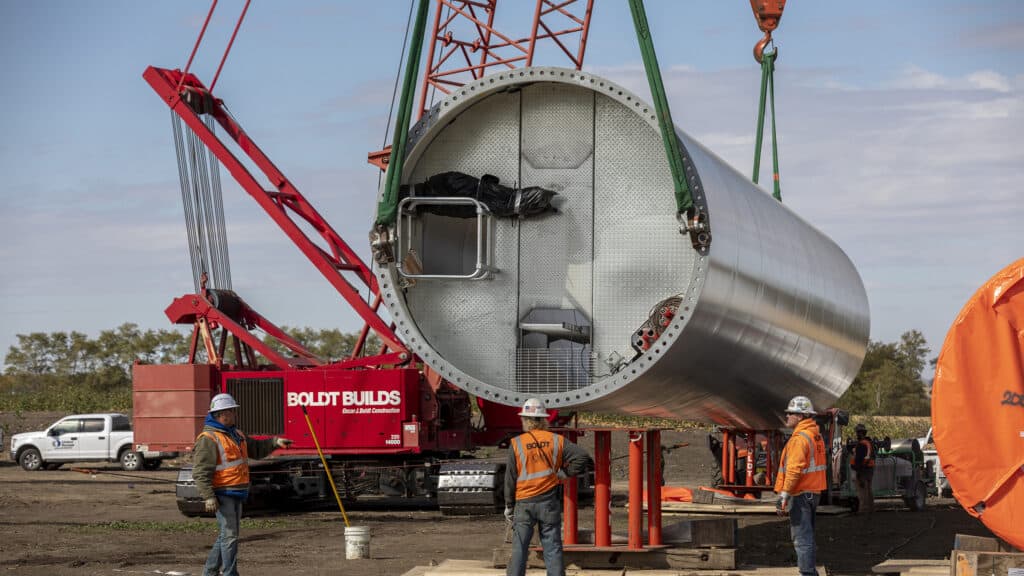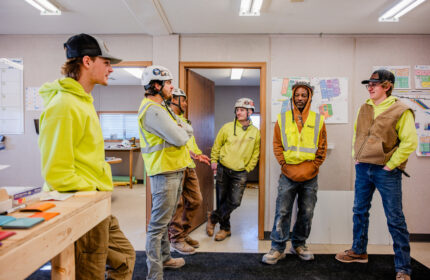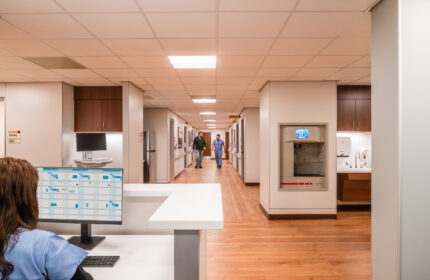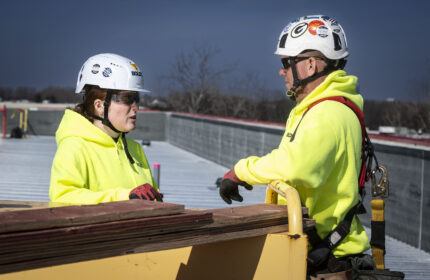Blog
Is 2023 The Year of Renewable Energy?
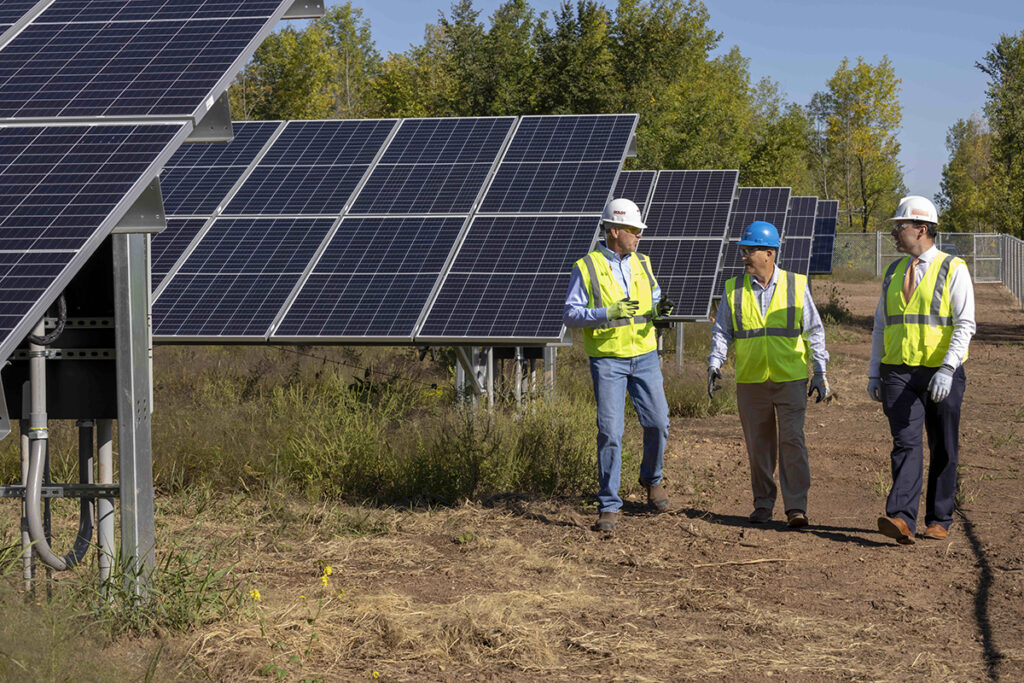
Boldt’s Mark Osten talks turbine tech, tax breaks, and tariffs in our look at the future of the renewable energy industry in America.
In 2022, 60% of the new power generation added to the energy supply in the U.S. came from new solar and wind projects—46% from solar, 17% from wind¹. But developing and building that capacity comes with unique challenges, and opportunities.
As vice president of business development in the energy sector for The Boldt Company, Mark Osten has an up-close view of what the future looks like for the renewable energy sector, and how contractors like Boldt are at the heart of it.
Can you tell me about your background and how you got started in the industry up to now?
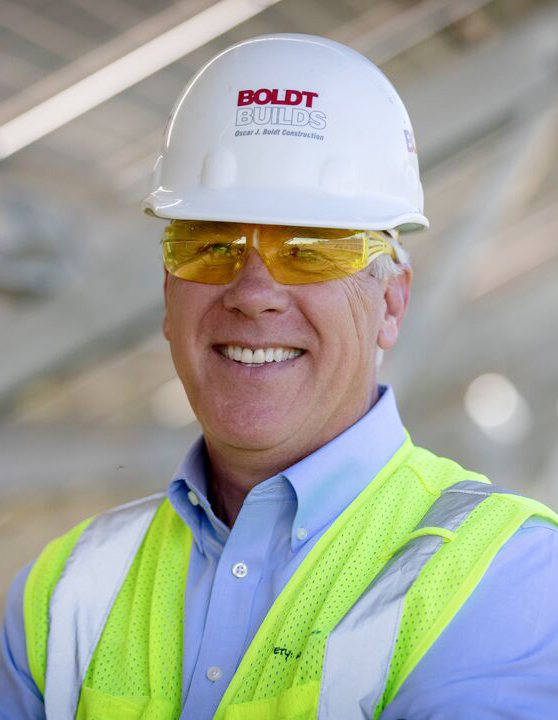
Vice President of Business Development
I started my career as an exploration and development geologist in the oil and gas industry in Oklahoma and Texas in the 1980s. In the 1990s I shifted to environmental consulting and relocated to Wisconsin to be closer to family, mostly doing groundwater and land use studies for siting new industrial and energy facilities. That led to power plant project development, helping customers develop natural gas plant sites in the U.S., primarily in the upper Midwest. Part of that included legislative and regulatory affairs and media relations.
As the wind industry started to pick up in the late 1990s and early 2000s, I was doing more and more complete project site development to help wind energy developers secure their sites for construction, which eventually grew into designing and building wind farms across the country.
Prior to joining Boldt, I hired Boldt to work on some of those wind projects and through our collaboration got to know them better. So, when the company I was working for was restructuring, I took the opportunity to join Boldt to help reinvigorate their energy business development program. That was about 11 years ago, and I’ve never looked back.
What was Boldt’s background in the renewable energy sector before you joined?
Boldt entered the renewable energy sector through those first projects we worked on together with my previous company, building wind farms in Indiana. While Boldt had early success as a turbine erection contractor, it wasn’t really an area of focus like in other markets, it was more about working the opportunities as they came along. When I joined Boldt, my primary responsibility was to develop those areas of opportunity and grow Boldt into a “go to” energy builder, primarily in wind power. Since then, we’ve grown into solar, and continued to expand our resume of natural gas, hydropower, and coal maintenance construction services.
“We’re at a point where we have built a strong resume and team. Now we are looking to bring in new talent, as well as continuing to develop our current talent, as we position ourselves to support the growing demand for all energy sources.”
We’re at a point where we have built a strong resume and team. Now we are looking to bring in new talent, as well as continuing to develop our current talent, as we position ourselves to support the growing demand for all energy sources.
What kind of clients does Boldt work with in the energy sector?
We partner with a wide array of companies and organizations, from major utility companies, to developers, to independent power companies, to industrial customers, and institutions like higher education and healthcare organizations that want to generate their own power, either for their facilities or to sell back to the grid.
How has the renewable energy construction industry changed since you started?
Most notably is how it has grown tremendously. In addition to that growth, there are also a wider variety of generators in addition to wind. This includes solar, batteries, a resurgence of biomass / biogas, and the emergence of hydrogen and small-scale nuclear in the market. The technology has also evolved. One specific area that stands out for Boldt is the development of wind turbines and their construction. When Boldt started building wind projects, the turbine technology was smaller— both physically and in terms of energy output. As technology has evolved, the turbines have gotten bigger, taller, and capable of generating more energy. Each time that technology advances, it takes new equipment, new cranes, and new techniques for installing the equipment. As a contractor, Boldt has kept pace with those changes and is growing into the other markets as they develop. That ability to grow with the industry has kept Boldt active in the market.
What does the short-to mid-term future of the industry look like?
There was a slowdown in new project development in 2022 as developers were waiting to see what would happen with the Inflation Reduction Act (IRA). That passed in late 2022 and was signed into law, but we’ll likely see that lag continue into early 2023 as the rule-making processes and regulatory side are being sorted out and providing clarity to how projects are executed and documented. We’re anticipating more aggressive development starting in 2024 and beyond. The IRA provides a much longer runway for new project development than previous legislation and the utilities, developers, and OEMs see a much longer and more stable market as a result.
On the solar side, there has been a delay in recent years, largely due to tariffs on Chinese goods, and then the COVID-19 shutdowns. Production was largely non-existent for solar panels coming from China for the last two years. It is now just starting to ramp up, but there is a lot of backlog to work through before new projects can move forward.
You mentioned the Inflation Reduction Act, which was signed into law in 2022. How exactly does that impact the renewable energy construction market?
The Inflation Reduction Act (IRA) is a broad reaching law which includes tax provisions that provide substantial incentives to accelerate the deployment of clean energy, clean vehicles, clean buildings, and clean manufacturing. The law includes bonus credits to projects that are located in low-income communities or energy communities, pay prevailing wages and use registered apprentices, or meet certain domestic content requirements. As a company that pays prevailing wages and uses qualified apprentices, this law enhances Boldt’s position in the marketplace for building renewable energy projects.
“As a company that pays prevailing wages and uses qualified apprentices, [the Inflation Reduction Act] enhances Boldt’s position in the marketplace for building renewable energy projects.”
In the past, similar incentives have been short-term, maybe two-three years, which played havoc with business planning. The IRA however provides a 10-year window for these incentives, creating more certainty for developers, manufacturers, and contractors to grow their businesses in a more stable market environment.
Broad picture: Do you think government incentives will be effective in substantially altering our energy mix over the next 10 years or so?
Absolutely. We’re seeing it already through other federal tax incentives and investment credits, state renewable portfolio standard requirements, and local incentives; even before the IRA was enacted. With the IRA added into the mix, these factors make existing fossil fuel plants less economically viable, leading to closures all over the country.
Over the next 10+ years, wind and solar are going to keep gaining market share. However, because of the intermittent nature of the power produced through wind and solar, the ability to store that energy is going to require significant investment as well. It will take a tremendous amount of wind, solar and energy storage to replace what we can currently produce with coal and natural gas plants.
Until the renewable energy fleet reaches critical mass, we’ll continue to see natural gas plants as a vital part of our energy supply because their reliability stabilizes the intermittency of renewable energy sources. Boldt will continue to grow its business to build all types of power plants to meet our country’s energy needs.
What value does Boldt offer up-front for renewable energy developers?
It varies depending on the type of project. Boldt primarily focuses on wind, solar, and hydroelectric in the renewable energy sector. For hydroelectric, those are typically maintenance projects or upgrades to existing facilities; new dams are very, very rare today. Upgrades to power houses, maintenance of gates and structures, and installation of new generating equipment is most typical.
On the wind and solar side, Boldt is generally engaged as an “EPC contractor,” which stands for “engineering, procurement, and construction.” We provide developers with a single turnkey source for executing their project. We will take the initial drawings made for bidding and work with engineering firms to finalize them into issued-for-construction (IFC) designs. Equipment specifications will then be generated so we can then procure the equipment for the project (roadway materials, concrete, steel, wire, substation components, etc.), and we will assemble and install the equipment, along with any necessary balance of plant infrastructure. The only exception on the procurement side is that the owners will nearly always furnish the wind turbines or solar modules – the primary generating assets.
“In terms of value for our clients, beyond our experience with these kinds of projects, Boldt is a national company with a nationwide workforce, so we’re capable of deploying just about anywhere that our clients need us.”
In terms of value for our clients, beyond our experience with these kinds of projects, Boldt is a national company with a nationwide workforce, so we’re capable of deploying just about anywhere that our clients need us. As a union contractor that pays a prevailing wage and uses apprentices, clients that use Boldt for their projects are going to be able to take advantage of the tax incentives offered from the Inflation Reduction Act.
On a smaller scale, you have what are called “microgrids,” which are essentially just small energy distribution systems typically not managed directly by the utility. Oftentimes these are deployed by organizations such as universities, corporations, industrial facilities, and hospital networks. For instance, we’re looking at a single wind turbine project for an automaker that would provide supplemental renewable energy to the plant. These smaller facilities can supplement to energy needs of the owner as an offset to their power bills and as a way to reduce their carbon footprints. Boldt has a lot of experience working with these types of facilities and customers, making us a valuable partner to bring to the table when planning for such projects.
Do you have any final thoughts you want to convey?
This is a very exciting time in the energy industry and the work that we do now is going to have long-term impacts not just locally, but around the world. I’m grateful that Boldt is committed to growing its services to the energy marketplace and I am proud to play a role in that effort.
Curious About Our Renewable Energy Market?
About The Boldt Company
The Boldt Company (Boldt) is a leading professional construction services firm with customers across the United States and is a subsidiary of The Boldt Group. Founded in 1889, Boldt is a fourth-generation family and employee-owned firm headquartered in Appleton, Wisconsin. Boldt is recognized as a pioneer in Lean construction and in the industrialized construction space. Boldt operates 18 offices across the U.S. that serve customers in healthcare, power, industrial, education, automotive and commercial markets.
